Insulating a low-pitch rubber roof.
Hi folks, I am looking for some advice on insulating a low pitch rubber-roofed lounge. When pulling down the drop ceiling, we found that there was no insulation so now looking at options.
Some people swear by spray-foam but as a living space, I would prefer not to use it due to the possible off-gassing. Other folks recommend blown-in cellulose once the drywall ceiling is up and creating a cold roof. There are no vents where the room joins the main building so we would have to put vents in to create a cold-roof and as we are near Lake Erie in zone 5b, there will be snow in the winter. There is daylight coming in from the eaves in one area. Another friend recommended thick 6″ mineral wool directly under the roof with no cold-space, which is probably my preferred choice.
What are your thoughts? It’s 20″ from underside of ceiling to the bottom of the horizontal 2x6s with only an inch drop over 7ft. Then drops to zero in 4ft to the exterior external wall.
Thanks!
GBA Detail Library
A collection of one thousand construction details organized by climate and house part


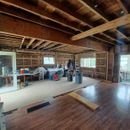
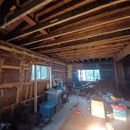
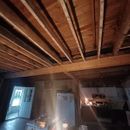
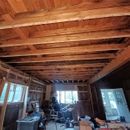
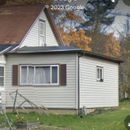







Replies
Unless y0u want to tear off the roofing and install continuous insulation on the exterior side of of the roof sheathing, your only option is to use closed-cell spray polyurethane foam.
For more information, see "Insulating Low-Slope Residential Roofs."
You should read 2021 IRC R806.5 Unvented attic and unvented enclosed rafter assemblies.
IMO, since you say you have no spare room at the low end, to avoid any condensation issues you need to install closed cell foam above the roof decking, the better solution, or ccSPF under the roof decking.
Seldom I've used ccSPF under the roof decking for several known reasons, but sometimes can be the better choice. By using experienced applicators in our markets, I've never had an issue with sprayed ccSPF.
These types of roofs are common enough around me (north edge of Zone 5) with typical extensions. They are generally insulated with batts at the ceiling level with soffit intake vents and a mushroom vent on the flat roof.
They seem to hold up well enough, during the lumber shortage I pulled the roof off a 30year old extension like this and the sheathing was in such a good shape that I ended up re-using it.
YMMW depending on your local climate. Dark roofs tend to be less risky.
P.S. Usually the roof cavity of extension are not air sealed from the house where the roof structure attaches. It is common for it to be completely open to the walls which creates a large air leak between the roof cavity and the house. Make sure you seal this up properly.
I was just at a building science conference that included a presentation with slides showing what can happen when you don't use foam with rubber roofs. I avoid foam whenever possible but this is a case where closed cell foam, either above or below the roof sheathing, is the only reasonable safe approach. Martin has a few other options in the article he linked to in comment 1 but they are not easy to accomplish in most cases. You can use a flash-and-fill system if you want to reduce your foam use. My approach is to avoid low-slope roofs whenever possible, in part to reduce the amount of foam I have to use.
Michael,
Agreed. Designing out low sloped roofs solves the problem, and does so at the right point in the process.